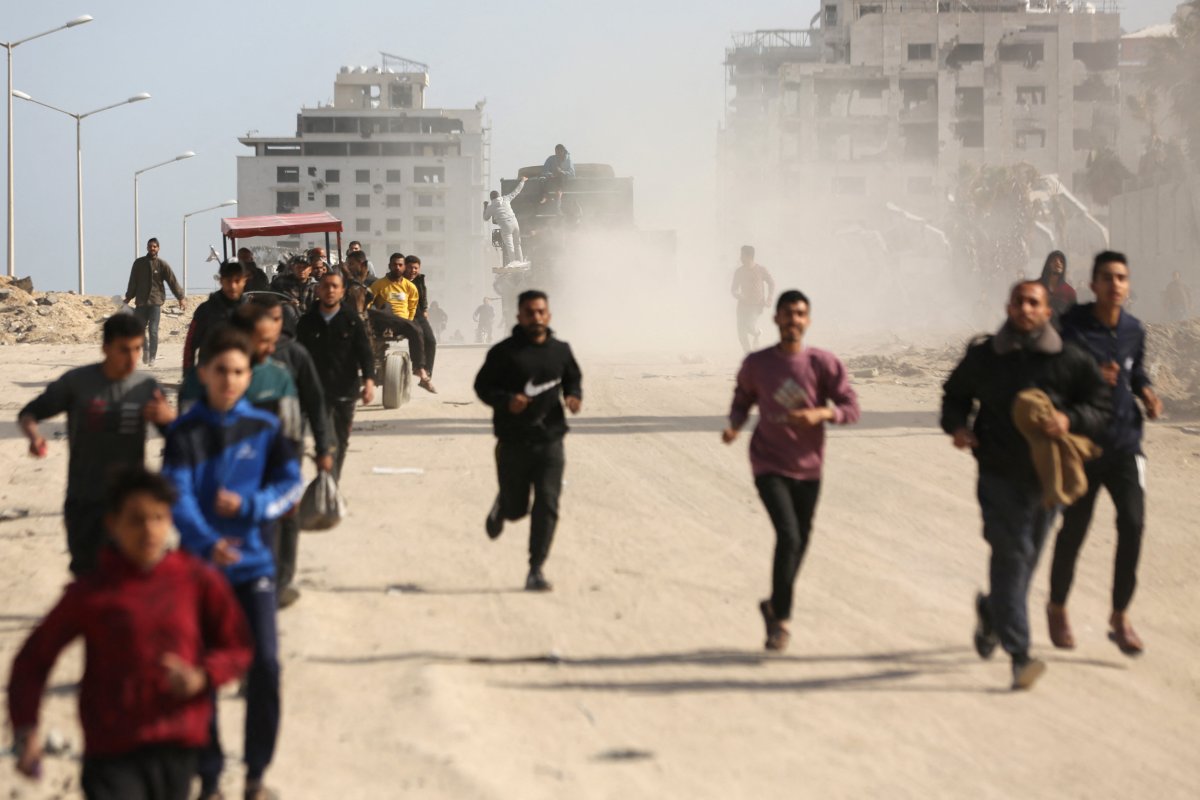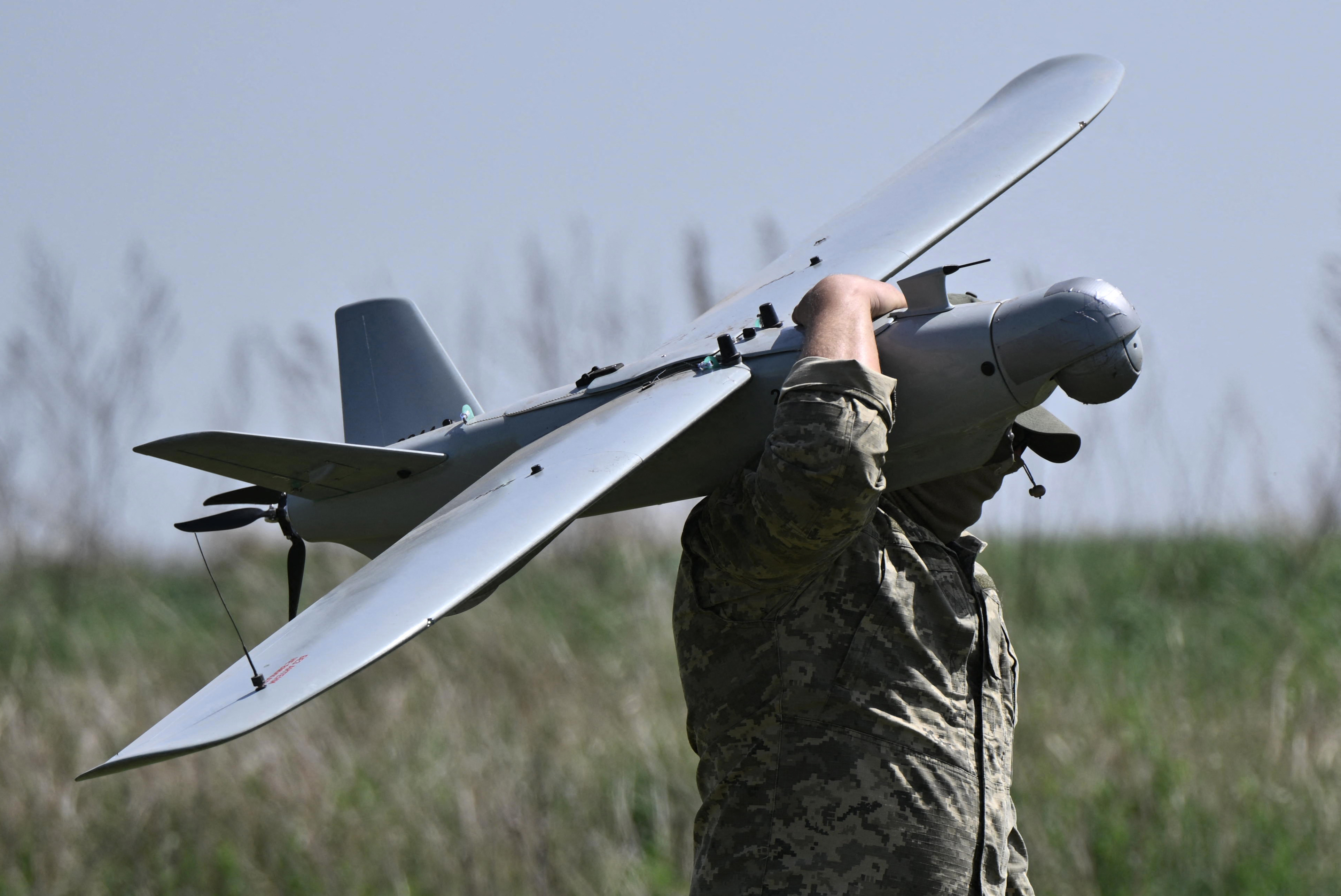I watched the aerial footage of the disaster surrounding the Israeli Defense Forces (IDF) attempt to deliver aid to Northern Gaza last Thursday in horror. While the complete details are unknown and awaiting further IDF investigation, what I did see brought back memories of my own experiences, ones I wish to forget, trying to deliver humanitarian aid during combat in war-torn cities. These missions were the ones I feared most.
War is chaos and so much of being a soldier is about maintaining a sense of control in utter chaos. Training for war is about preparing for foreseeable scenarios, like attacking an enemy held city, walking down an enemy street, or dodging roadside bombs, and then responding to those threats—often even without a deliberate thought process.
I was a platoon leader in Northern Iraq in 2003. It was a month after the invasion and I was tasked to use my infantry platoon to distribute water with a giant water truck containing over 4,000 gallons of water to a crowded slum in Kirkuk, Iraq, where the bombs to take the city had cut the power and damaged water lines. It was a mission my soldiers and I had never trained for.
But that is war—especially modern wars that center on densely populated urban areas, where soldiers have and will continue to be required to fight what U.S. General Charles Krulak called the "three block war" in which soldiers must simultaneously fight a vicious embedded enemy on one block, conduct peacekeeping operations on the next block, and deliver humanitarian aid on a third block.
Despite the complete lack of training for our mission to deliver water, we made a plan scribbled out in our pocket notebooks, which centered on the basics of security: We planned to secure the water truck inside our convoy and then at a distribution site in the city. We created an outer perimeter of vehicles and soldiers and an inner perimeter around the truck with a circle of razor wire to give standoff and create entry and exit points. Each soldier on the ground and gunners on the vehicles were assigned their areas to watch for threats.
The soldiers did their job. They scanned the hands of the crowd for weapons, scanned the windows for shooters. They pointed, yelled, even shoved to get people to the right places or away from the wrong place.
A crowd of men of all ages and mostly elderly women began to surround us, and it didn't take long for the crowd to turn into a mob. Thoughts ran through my mind of a suicide bomber or a weapon firing from the crowd. No matter the commands to form a line or back up, nobody would listen. They crowded the security trucks screaming in Arabic, making the soldiers extremely nervous. The crowd began throwing women into the razor wire as they shoved each other for a better position. This caused injuries we then had to help care for. It rapidly became uncontrollable, and I had to give the order to pack up and withdraw.
A few weeks later, we were tasked to deliver trucks of cooking gas into another area of Kirkuk. We had learned from our last experience trying to deliver water and found a small compound in the city we could use to get the trucks into. The walls of the compound would be our security bubble. We planned to place soldiers to pull security on the roof, entry and exit points, and four corners of the building.
This time it was not the distribution site that turned chaos but the drive in. We put the two gated flatbed trucks carrying the gas tanks in the middle of our formation. As we drove, civilian cars of mostly beat up Nissan pickup trucks packed with men started to drive next to and even into the gas truck. Men from the pickups tried to jump onto the gas trucks.
Once again we had to abort the operation, and I told my convoy to return to base.
The worst experience I had was in 2009 as a company commander in Baghdad tasked to deliver water and MREs (meals-ready-to eat), the same ones that were air-dropped by U.S. this week in Gaza. We were delivering the aid to an impoverished and overcrowded neighborhood consisting of rundown eight-story apartment complexes that had experienced a water and power outage the day before.
Distribution started orderly, but within minutes, a crowd formed and refused to stay in lines or in a single area. They refused to give even a foot of space to my soldiers or the truck, and started grabbing at both. In a matter of minutes, the crowd turned to a mob. My soldiers were being engulfed. I immediately ordered a withdrawal.
Soldiers always have the right of self-defense. That must never be taken from them. In urban areas, especially those still active war zones, the threats are everywhere. In the case of Gaza where heavy fighting continues, threats can be snipers, rocket propelled grenades. We know Hamas dressed in civilian clothes have been walking up to armored vehicles to place magnet bombs and fire into the crowd during aid distribution.

Much of combat is about seeking control, and one of the reasons delivering aid in a combat zone is so hectic is because of how control can be lost in a millisecond.
Writing in the late 1990s after the U.S. military tried to assist in aid delivery operations in Mogadishu, General Kurlak, did not foresee the age of fighting a war in a global fishbowl where the cell phone footage of every civilian in the area is recording your every cuss word. A war where a single photo or video clip can spread to millions if not billions of people in seconds with no context.
I cannot imagine the added feeling of helplessness not only in the moment when all control is lost in a humanitarian aid delivery operation but knowing that your worst moment is being recorded. I do not wish it on any soldier.
John Spencer is chair of urban warfare studies at the Modern War Institute (MWI) at West Point, codirector of MWI's Urban Warfare Project and host of the "Urban Warfare Project Podcast." He served for 25 years as an infantry soldier, which included two combat tours in Iraq. He is the author of the book Connected Soldiers: Life, Leadership, and Social Connection in Modern War and co-author of Understanding Urban Warfare.
The views expressed in this article are the writer's own.
Uncommon Knowledge
Newsweek is committed to challenging conventional wisdom and finding connections in the search for common ground.
Newsweek is committed to challenging conventional wisdom and finding connections in the search for common ground.
About the writer
To read how Newsweek uses AI as a newsroom tool, Click here.






